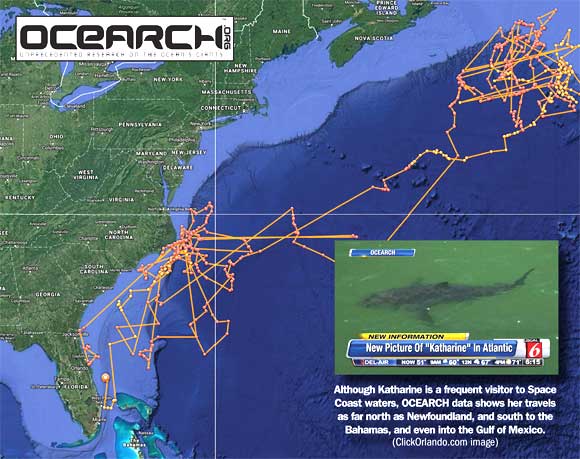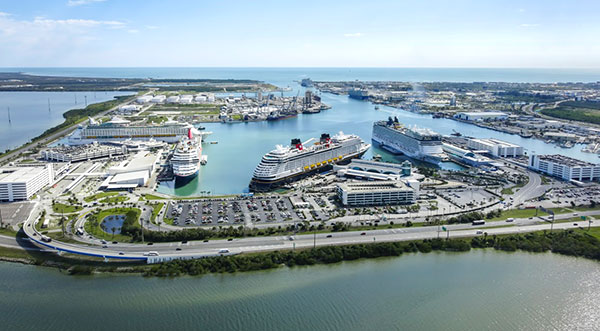ISAF 2016 Worldwide Shark Attack Summary: Florida Had Largest Portion of Total Unprovoked Attacks
By ForidaMuseum.ufl.edu // May 8, 2017
Volusia had 15 unprovoked attacks, Brevard 3
ABOVE VIDEO: This video from April 11 warns beach visitors after two shark incidents in Brevard County. (WPTV news)

(FloridaMuseum.ufl.edu) – The International Shark Attack File investigated 150 incidents of alleged shark-human interaction occurring worldwide in 2016. Upon review, 81 of these incidents represented confirmed cases of unprovoked shark attacks on humans.
“Unprovoked attacks” are defined as incidents where an attack on a live human occurs in the shark’s natural habitat with no human provocation of the shark.
Incidents involving sharks and divers in public aquaria or research holding-pens, shark-inflicted scavenge damage to already dead humans (most often drowning victims), attacks on boats, and other incidents involving provocation by humans occurring in or out of the water are not considered unprovoked attacks.
“Provoked attacks” usually occur when a human initiates physical contact with a shark, e.g. a diver bitten after grabbing a shark, attacks on spearfishers and those feeding sharks, bites occurring while unhooking or removing a shark from a fishing net, etc.
As has been the norm for decades, Florida proportionately had most (60.4%) of the unprovoked attacks in the United States and the largest portion (39.5%) of the world’s total; both percentages higher than recent (2011-2015) averages of 49.2%, and 29.0% respectively.
The total of 32 Florida bites was a bit higher than the 2015 total of 30 and well above the recent five-year average of 23.8 (which included a recent record low of 11 in 2011), but did not approach the record high of 37 that occurred in 2000. Also following recent trends, Volusia County had the largest number (15) of unprovoked incidents in the state.
The number of bites was notably higher than the its recent five-year average of eight attacks per annum but much lower than the record high of 22 such incidents in 2001.
The higher number of encounters in this central-east coast county is attributable to high aquatic recreational utilization of the area’s long and attractive beaches and waters by both Florida residents and tourists, including large numbers of surfers, and to the rich nature of its marine fauna.
BREVARD COUNTY HAD THREE UNPROVOKED ATTACKED
ABOVE VIDEO: Ten most dangerous places on earth for shark attacks.
Other Florida counties having bites were Duval (4), Brevard (3), St. Johns (3), Indian River (2), and Flagler, Lee, Palm Beach, Pinellas, and St. Lucie (1 each). Outside of Florida, U.S. attacks were recorded in Hawaii (10), California (4), North Carolina (3), and South Carolina (2), with single reports in Texas and Oregon. Hawaii and California totals were comparable the recent five year averages of eight and five per year, respectively.
The 69 incidents not accorded unprovoked status in 2016 included 37 provoked attacks, 12 interactions involving a shark biting a motorized or non-motorized vessel (“boat attack”), one incident involving post-mortem bites (“scavenge”), and 12 cases in which data was too scanty at this time to determine if a shark attack occurred (“insufficient evidence”).
Seven incidents were regarded as not involving a shark, including one case attributed to an eel and one attributed to a barracuda. The five other cases were determined as involving abiotic injuries.
The 2016 yearly total of 81 unprovoked attacks was on par with our most recent five-year (2011-2015) average of 82 incidents annually. By contrast, the 98 unprovoked incidents in the previous reporting year, 2015, was the highest yearly total on record.
The number of shark-human interactions occurring in a given year is directly correlated with the amount of time humans spend in the sea. As world population continues its upsurge and interest in aquatic recreation concurrently rises, we realistically should expect increases in the number of shark attacks and other aquatic recreation-related injuries.

SHARK POPULATIONS DECLINING
If shark populations remain the same or increase in size, one might predict more attacks each year than the previous year because more people are in the water.
Shark populations are actually declining or holding at greatly reduced levels in many areas of the world as a result of over-fishing and habitat loss, theoretically reducing the opportunity for these shark-human interactions.
However, year-to-year variability in local meteorological, oceanographic, and socio-economic conditions also significantly influences the local abundance of sharks and humans in the water and, therefore, the odds of encountering one another.
As a result, short-term trends in the number of shark bites up or down must be viewed with caution.
Such marked yearly fluctuations in shark-human interactions, be they regional or international in scope, are not unusual. Thus the ISAF prefers to view trends over longer periods of time (e.g., by decade) rather than trying to assign too much significance to highly variable year-to-year numbers, be they high or low.
Following long-term trends, continental North American waters had the most (53.1% of world total) unprovoked attacks in 2016. The total of 53 (65.4 of world total) unprovoked attacks in the United States (including ten in non-North American Hawaii) is a decline from the record high year of 2015, which saw 59 unprovoked attacks. There were no fatalities in U.S. and North American waters.
Elsewhere, multiple unprovoked attacks occurred in Australia, New Caledonia, and Indonesia, and single incidents were reported from the Bahama Islands, Brazil, Japan, La Reunion, South Africa, Spain and Sri Lanka.
CLICK HERE to see more on FloridaMuseum.ufl.edu>>
CLICK HERE FOR BREVARD COUNTY NEWS
















